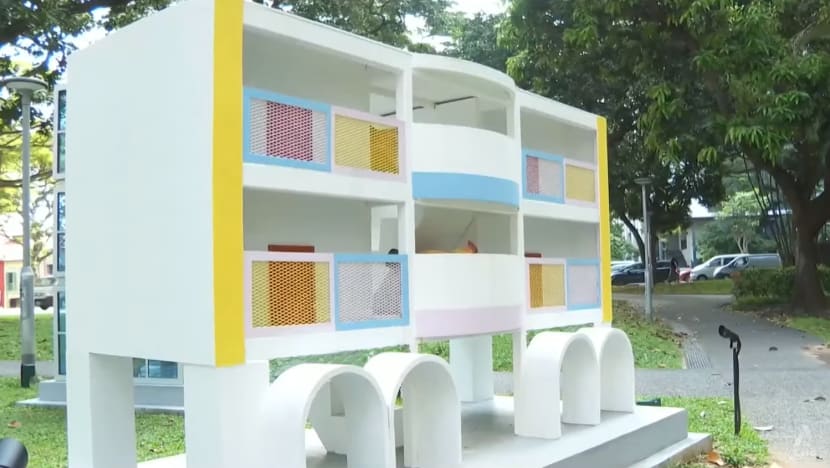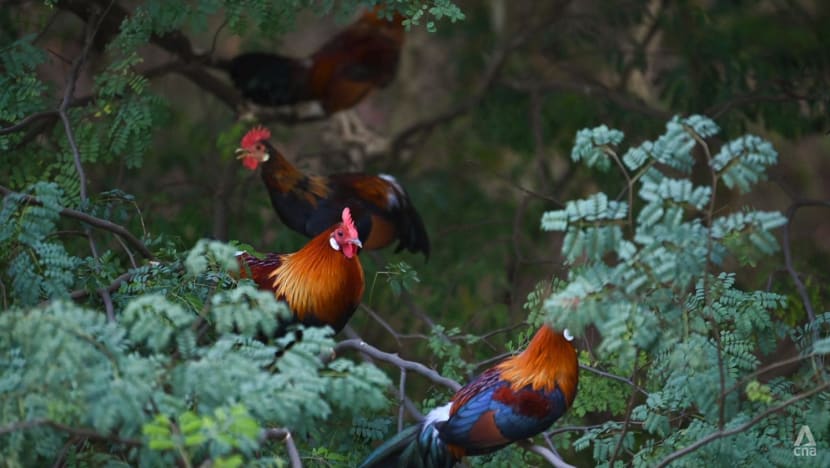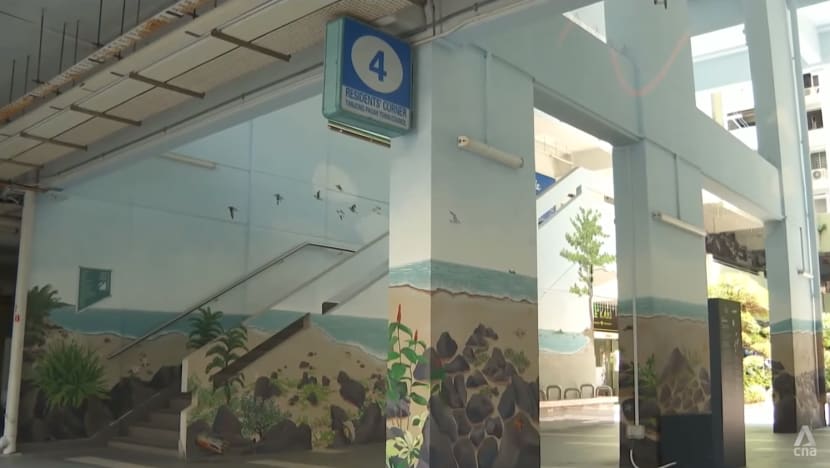HDB flats for junglefowl part of Singapore Art Museum’s latest outreach in unexpected places
The Singapore Art Museum is placing exhibits in unexpected places across the island for the next two years, in an attempt to bring art closer to the people.

Netizens were tickled by what appeared to be a flock of chickens settling into structures resembling miniature Build-to-Order flats, later revealed to be a public art installation.
SINGAPORE: Hikers on the Rail Corridor may come across some artworks while walking along the trail for the next two years.
This comes as the Singapore Art Museum’s (SAM) places exhibits in unexpected places across the island, in a bid to bring art closer to people.
Apart from the historic railway line, the museum’s latest venues include the residential neighbourhood of Tanjong Pagar. The initiative will run until Mar 9, 2025.
FOWL PLAY
Last month, artist Divaagar’s work Everfowl Estate grabbed the attention of netizens after appearing in a video on social media platform Tiktok.
Netizens were tickled by what appeared to be a flock of chickens settling into structures resembling miniature Build-to-Order flats.
However, SAM later revealed in an Instagram story that the set-up at Everton Park was part of its public art installation.
Through his artwork, visual artist Divaagar wants viewers to reflect on their coexistence with their feathered non-human neighbours, a common sight in one of Singapore’s oldest residential estates.
"I did a lot of digging to sort of understand why they were here in the city. I was quite interested in how they were so adaptable. I wanted to sort of look into … how the junglefowl were perceived by the residents and people in general,” he told CNA.
“I found that they were generally quite divisive in nature. On one hand, I think Singaporeans really love nature and animals and all these things. But on the other hand, they also don’t like to live beside them.”

Hence, his work aims to challenge viewers to see the junglefowl in a new light.
DRAWING PEOPLE TO ART
SAM had asked artists for works that reflect everyday life, so they would be recognisable to those who live in the Tanjong Pagar neighbourhood.
In fact, all the artworks along the trail of art installations reflect their surroundings.
Ms Isabella Teng’s Little Islands, a series of murals at Tanjong Pagar Plaza, draws reference from historic island landscapes of Singapore to portray the area’s history and rapid evolution over the years.
It was created together with residents, who pitched in to paint parts of it and also suggested colours they wanted to see.
Ms Ong Puay Khim, SAM’s deputy director of Collections and Public Art, said: "We certainly hope that by bringing art into publicly accessible spaces, people will be curious about how art can offer different perspectives on life and society, and thereby also then be interested and motivated to go to museums to see more and very different kinds of artistic productions."

The museum has a permanent space at Tanjong Pagar Distripark. Its galleries there are currently undergoing a refresh of exhibitions and will reopen next month.
Its second trail of installations along the Rail Corridor seeks to encourage people to explore parts of Singapore that are off the beaten path.
It features three artists who capture the location’s deep history, referencing its past as a colonial railway to its continued relevance today as an urban and community leisure zone.
















